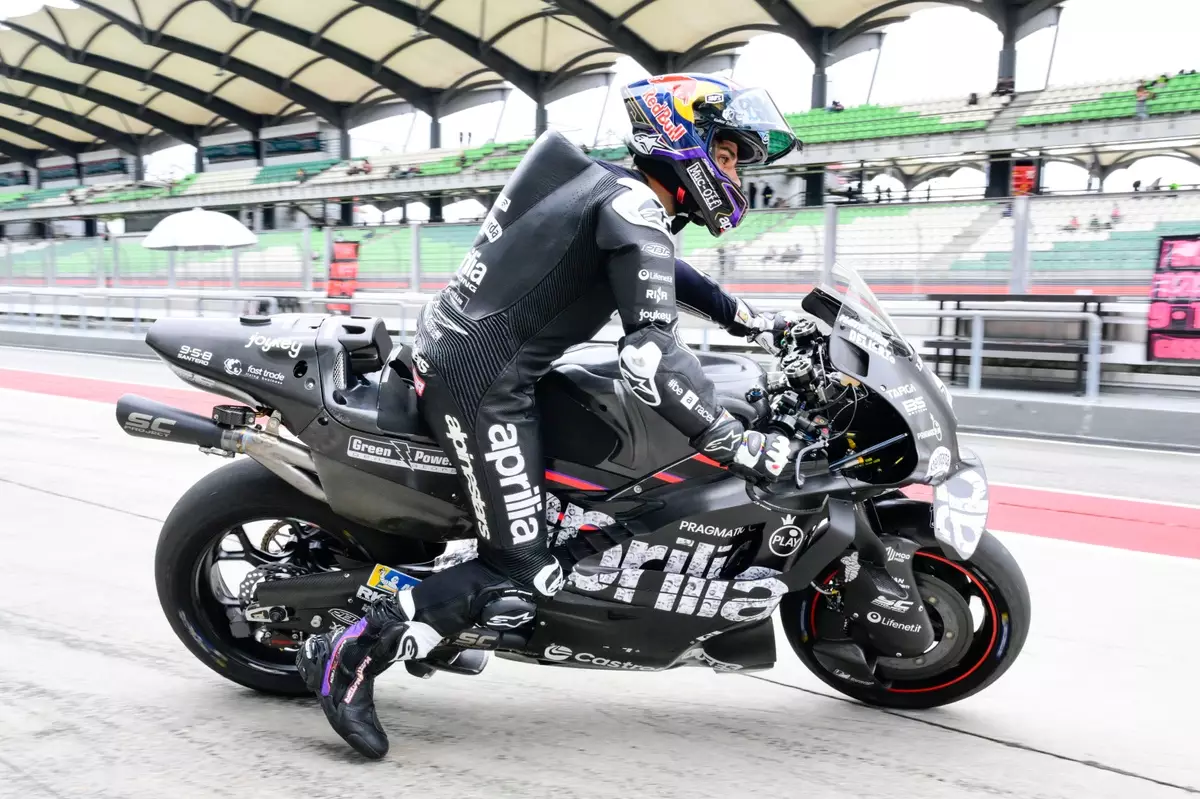The start of the 2023 MotoGP season was marred by a significant incident involving reigning world champion Jorge Martin during the Sepang pre-season testing. Martin, who rides for Aprilia, experienced a severe highside that led to a heavy crash, raising concerns not only about rider safety but also about the integrity of the components provided by Michelin, the tire supplier. This unfortunate event has sparked a heated debate between Aprilia and Michelin, culminating in demands for clarification and a need for collaborative dialogue across teams.
Following the crash, Michelin released an official statement attributing the incident to a drop in the temperature of Martin’s rear tire, indicating that readings showed a 15-degree Celsius discrepancy from the expected temperature. This assertion has provoked immediate pushback from Aprilia. Their motorsport chief, Massimo Rivola, expressed skepticism regarding Michelin’s analysis, emphasizing that Martin had performed neither poorly nor erratically. Rivola’s comments hinted at a deeper concern about the quality and storage conditions of the tire compounds used in testing, raising a vital question: were they adequately monitored prior to the event?
In response to Michelin’s assertion, Rivola has taken a firm stance, calling for a thorough investigation and a meeting of all teams involved to address the safety concerns stemming from Martin’s crash. He pointedly remarked, “Our data does not corroborate Piero Taramasso’s statements,” suggesting a disconnect between the tire experts and the actual conditions experienced during the test. Rivola’s insistence that rider safety is paramount resonates through the paddock, especially with the increasing frequency of accidents in pre-season tests.
The implications of this incident extend beyond mere finger-pointing. It underscores an urgent need for accountability and transparency in the production and management of critical safety components like tires. There is a growing call for ongoing dialogue among manufacturers, teams, and governing bodies to ensure that the safety of riders is never compromised.
The aftermath of the crash left Martin with significant injuries, including a displaced fracture in his right hand and multiple fractures in his left foot. This incident necessitated immediate medical attention, dictating that Martin be flown back to Barcelona for surgery, performed by renowned specialist Dr. Xavier Mir. Thankfully, the operation was deemed successful, and it reportedly will enable a short period for functional recovery.
Despite the optimistic outlook on his recovery, questions linger about Martin’s ability to participate in the upcoming tests in Buriram. While both he and teammate Raul Fernandez have been provisionally listed, Martin’s health will ultimately dictate his capacity to compete. The uncertainty surrounding his participation highlights the potential long-term impact of tire issues on rider health and the overall competition.
As the 2023 MotoGP season approaches, the situation raises critical discussions around rider safety and the role of tire manufacturers in competitive motorsport. The relationship between teams and suppliers goes beyond the provision of goods; it plays a decisive role in influencing the safety of riders who entrust their lives to the equipment they use. The stakes are undeniably high, and as the number of crashes continues to escalate, stakeholders must heed the warning signs rather than dismiss them as isolated incidents.
The dialogue initiated by Rivola could pave the way for systemic changes in how safety standards are maintained and enforced in MotoGP. A collaborative approach involving all parties—manufacturers, teams, and regulatory bodies—will be essential for building a safer environment for riders and enhancing the integrity of the sport.
The incident involving Jorge Martin at the Sepang test has ignited a critical conversation about safety in MotoGP. Michelin’s claims and Aprilia’s counterarguments illustrate the complexities of ensuring rider safety in a high-stakes environment. As the community looks ahead to the upcoming season, the emphasis must remain on transparency, accountability, and collaboration to ensure that such incidents do not become the norm, but rather are addressed with the seriousness they warrant. Now is the time for all parties involved to step up and prioritize the well-being of the riders above all else.

